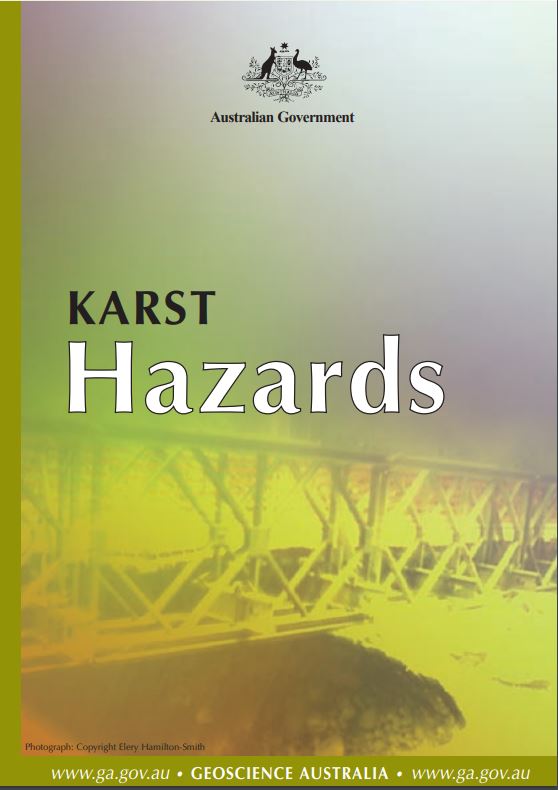karst
Type of resources
Keywords
Publication year
Scale
Topics
-
What is Karst? Karst landscapes are shaped when surface or ground water becomes weakly acidic and reacts chemically with atmosphere or soil carbon dioxide. The dissolving actions of water on limestone bedrock result in a distinctive landscape defined by depressions such as sinkholes, caves, holes and solution pipes.
-
Near surface information can be obtained from regional seismic data showing the weathering and layering properties, as well as dipping bedrock structures. Hard limestone layers in the near surface overlying soft sediments make complex refracted arrivals and refraction statics are difficult to define and in some cases it is best not to apply refraction statics to the reflection data. For some of the data in this survey surface sand dunes over 10 m high caused significant time delays for reflected data and refraction statics were essential prior to further reflection processing. Numerous refraction models were produced and tested along the data. Refraction models provided useful information about layering in the near surface, and helped with the seismic processing. The refractor models also indicated the possible presence of ground water. In some places the refracted arrivals changed polarity indicating either change in thickness or hardness of the limestone at the near surface overlying slower unconsolidated sediments. These regions sometimes correlated with diminished reflections. Dip moveout (DMO) correction was essential to improve near surface steep dipping structures.
-
As part of a study to investigate relative sea level history from the Tertiary North West Shelf of Australia, we descibe a seismically imaged. stratigraphic architectural element not previously associated with prograding carbonate clinoforms. a strike-oriented trough on an early mid0Miocene sequence boundary. This trough located on a shallowly dipping carbonate ramp, is recognized on both 2-D and 3-D seismic data by truncation, reflector interruption and amplitude variations. It is composed of three individual segments, each up to 500 m wide and 60 m deep, wide variable cross-sections. Their combined length, orthogonal to the progradation direction, is ~ 8 km. The trough occurs where there is a slight basinward increase in dip, and a facies change on the ramp from sand-sized calcarenite to clay-sized calcilutite. It has both a cross-cutting and sub-parallel relationship with underlying Paleogene faults reactivated within a Mesozoic basin-forming trend. The trough, does not conform to known drainage patterns, or contour current incisions mapped in similar environments elsewhere. We propose that this seismically mapped trough is karst topography that developed as a result of preferential dissolution focused by heterogeneities within the exposed carbonate ramp. Stable isotope analyses conducted on bulk carbonate samples ~ 2 km updip, suggest a mixed, marine to slightly meteoric origin for associated porewaters. Furthermore, the sequence boundary on which the the trough is developed is contemporaneous with recognized subaerial exposure surfaces to the northeast and southwest. The presence of such a karst feature indicates a minimum fall in relative sea level at this location of 80-160 m during the early mid-Miocene.
-
Australia boasts 10,000 caves! Caves are a great way to introduce common scientific and geographic concepts to your students. This full colour large poster map 78 x 108 cm shows the location of all show caves, and many other caves, in Australia. The poster includes 24 informative images covering many aspects of Australian caves. Suitable for primary level Years 4-6 and secondary level Years 7-9.

